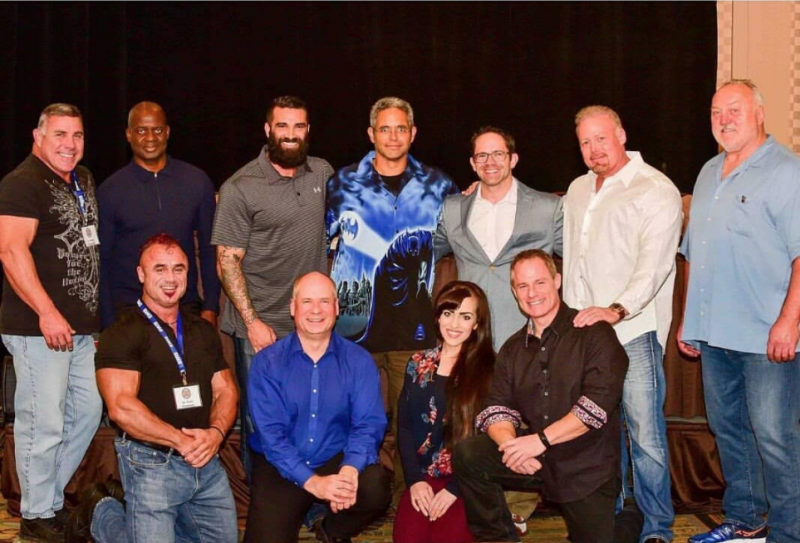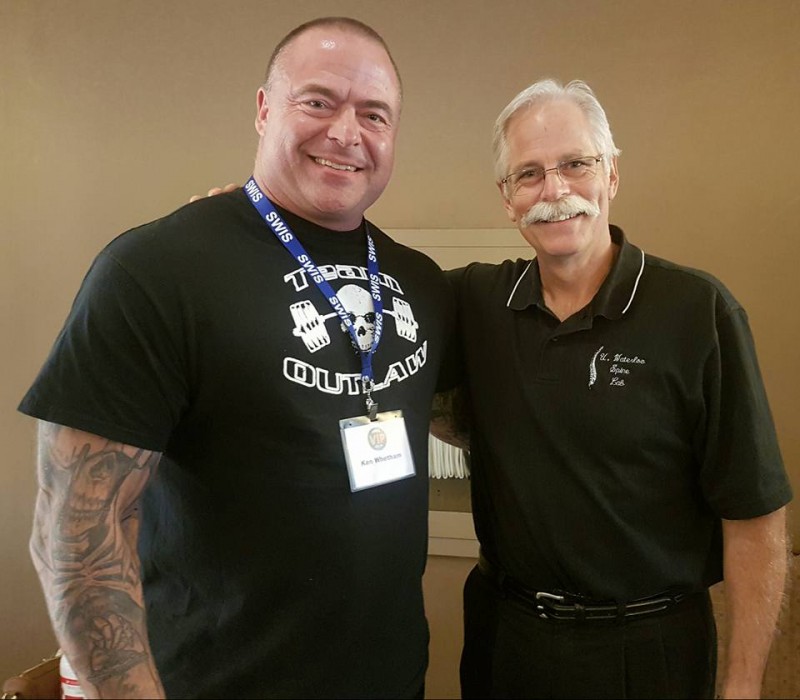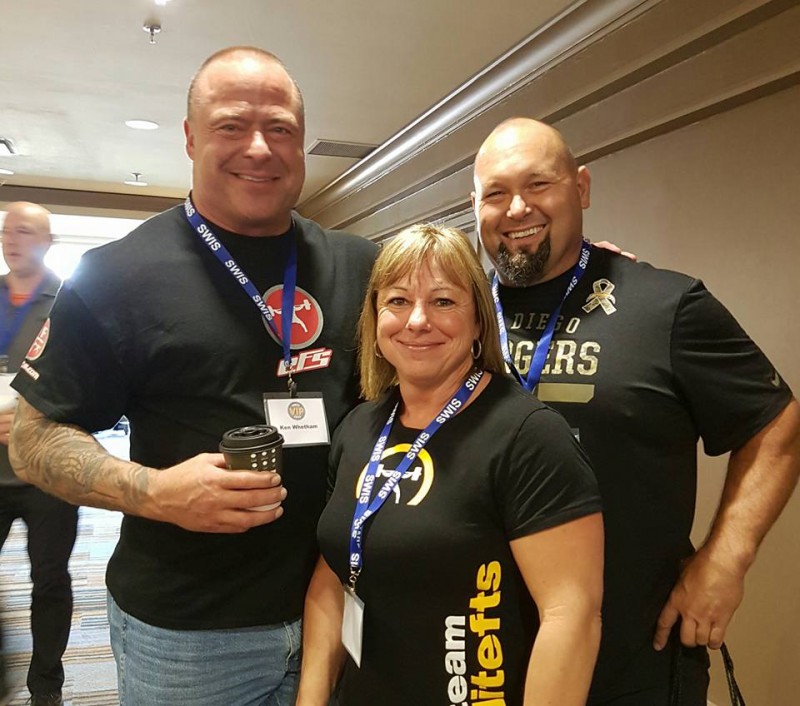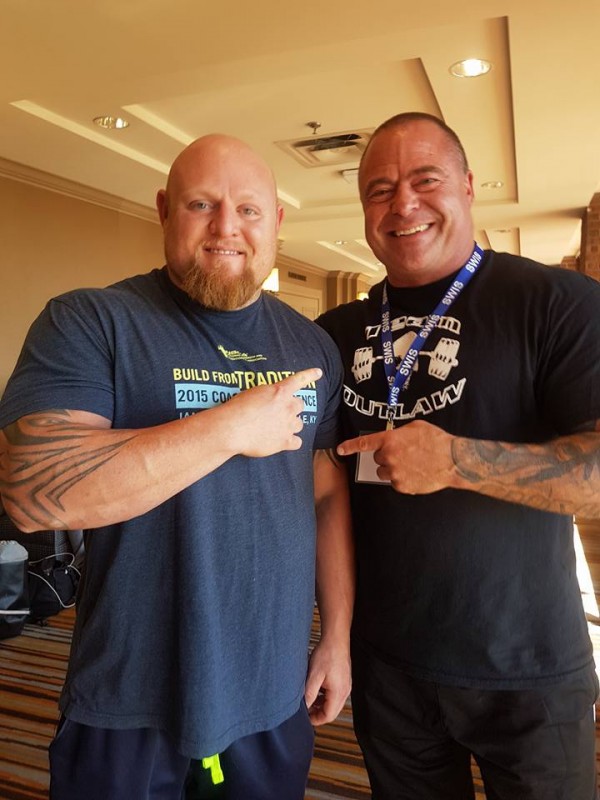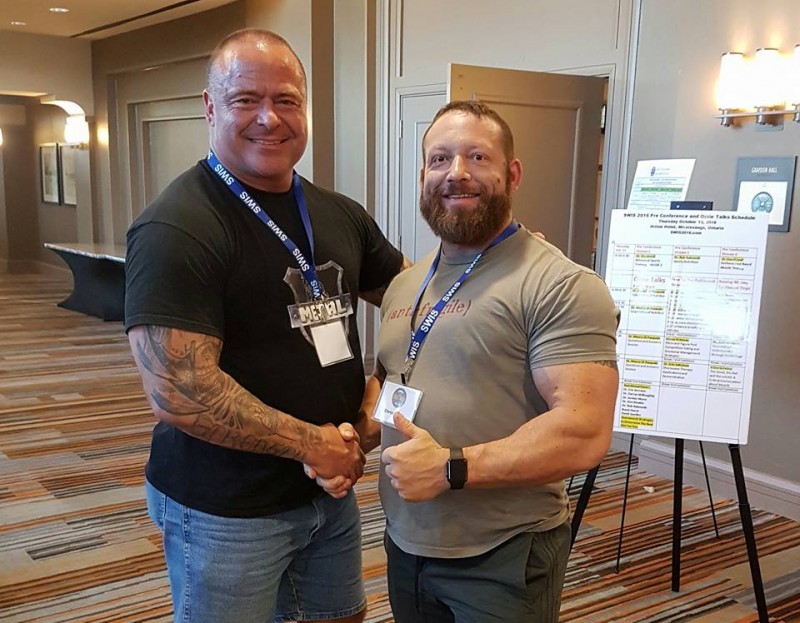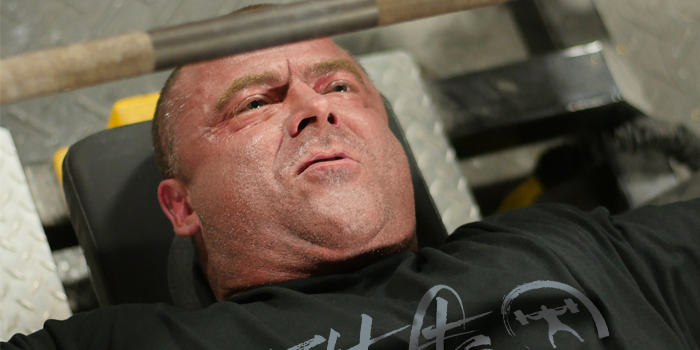
A few weekends ago, I had the privilege of attending the 2016 SWIS symposium in Mississauga, Ontario. One thing I can report without revocation is this: my mind was officially and completely blown! It was an amazing and magical experience.
Where to start? So many incredible people, so much knowledge, so many inspirational people in an amazing environment!
Anyone in the fitness industry who is involved in training, rehabilitation, nutrition, or treatment has heard of the SWIS symposium. SWIS, The Society of Weight Training and Injury Specialists, was founded by Dr. Ken Kinakin and brings the top people in the industry together for an entire weekend of presentations to learn about the latest breakthroughs in training, rehabilitation, nutrition and injury treatment. The symposium runs concurrently for two full days and is separated into four different streams with a variety of presenters who are the top of their respective fields. The most difficult part of the SWIS is deciding which presentations to attend. The great news is that each presentation is captured on video for delegates to review at any time.
RECENT: The SWIS Symposium — Everything That's Right with the Fitness Industry
The most unique part of attending the SWIS is the unprecedented amount of access you have to speak with the presenters. To walk down the hallway and speak with Chris Duffin, Donnie Thompson, David Tate, Dr. Stu McGill, Bill Kazmaier (just to name a few) is an experience of its own, separate from the presentations.
The biggest highlight of the 2016 SWIS was without a doubt the Friday night open panel discussion: "Supplement and Steroids” (Myths, Misconceptions and the Truth).
This was the first time in history that anyone has organized a panel of the top minds to openly discuss the “Dark Side” of sports supplementation. The panel members who discussed the topic included Dr. Eric Serrano, Rick Collins, Dr. Victor Prisk, Victoria Felkar, Brad Hull, Dr. Darryn Willoughby, Dr. Scott Stevenson, David Sandler and Dr. Ken Kinakin. The amazing guests that were included on the panel for this discussion were:
- Worlds Strongest Man Bill Kazmaier
- Six-time Mr Olympia Dorian Yates
- Canadian Olympic Sprinter Ben Johnson
The panel discussed the legalities, pros and cons, side effects, and the physiology of how the compounds work. Ben Johnson, Dorian Yates and Bill Kazmaier all spoke about what compounds they took and why, and the amounts taken. Victoria Felkar, a teacher at the University of British Columbia currently working on her Ph.D., responded on the effects and side effects of steroids on women and how they differentiate from men. The discussion was scheduled for one and a half hours but ended up going for over three hours after being opened up to the delegates for questions.
The take-away from the discussion for me was that everyone is different. Each person responds differently to different compounds in different amounts. Two people can take the same compound in the same amounts and have completely different results and side effects. The only way to really know what’s going on within your body is to be monitored by a physician and have ongoing proper blood work and tests. Otherwise, you’re playing a dangerous game of Russian roulette with your body and health.
I spent all day Thursday at a seminar with Professor Stu McGill who is the mean for spinal health, and teaches at the University of Waterloo. Dr. McGill has written numerous books on Spinal Care including “Back Mechanic”, “Low Back Disorders” and “Ultimate Back Fitness and Performance." Dr. McGill has worked with an impressive list of professional athletes including George St. Pierre, Brian Carroll, Olympic athletes, and strongmen.
Dr McGill’s presentation was on the topic of “Advanced Sports Training” and included information about getting maximal performance out of your body while preserving your back and eliminating injuries. I had the opportunity to speak with Dr. McGill about how we teach people to squat at our gym and have helped some lifters eliminate knee and hip pain through better squat mechanics. Dr. McGill advised he only lives a couple of hours of away from me and would love to come to our gym when our crew is squatting. Date is set for March 2017! Mind completely blown!
My next seminar was with Nanci Guest MSc, RD, CSCS in the Nutrition Stream whose lecture was "The Genetics of Fat Loss and Muscle Hypertrophy." Nanci Guest is working on her Ph.D and has been doing research while being a nutritionist for high-level Olympic athletes. The message was simple: people respond differently to different nutrients. Some people absorb and assimilate nutrients differently and that’s why diet plans have different results for different people. The best way to determine optimum nutrition is to do a DNA saliva swab that can be analyzed in a lab and technicians can determine which nutrients you respond well to and which ones you don’t. This type of test takes all the guesswork out of your nutrition plan, and allows a specific strategy to be utilized for optimum nutrition and performance. The company Nanci does all her research through is Nutrigenomix.
I attended the Rehab Stream from Mr. 3000 Donnie Thompson's seminar, “Low Back Strength Preparation and Body Tempering.” By the way, Donnie looks great! He’s dropped 65 pounds over the last few months and looks like a totally different person. The body tempering was really cool, and dealt with how he was able to stretch muscle fascia with static heavy weight and rolling. Donnie demonstrated different drills on how to re-align hip and pelvic issues and rehab shoulders, lower back, and calves. I had the chance to talk to Super D several times throughout the weekend and he without a doubt is one of the nicest guys I’ve met.
RELATED: The Deconstruction of a SHW Powerlifter
Next stop was the Training Stream to see Matt Wenning’s lecture, “Deadlift Assessment and Technique Coaching Points.” Matt’s lecture was hands-on with a lot of lifting and great pointers on why to incorporate the sumo deadlift into your training to improve your posterior chain strength and your conventional deadlift. I was happy to see that Matt’s philosophy on a lot of his training and coaching points were the same as mine, so it re-enforced that a lot of things that I’ve been doing and teaching have been correct.
The next lecture I attended was from JL Holdsworth, my good friend and a scary, intimidating, badass beast of a man. JL was doing a presentation on “Reflexive Performance Reset”, A system of “waking up the muscles” through manipulating different trigger points throughout the body. This was the same system that JL used to help David Tate eliminate his infamous “shakes” during squats and helped him hit new PR’s after a couple of sessions.
I had the sadistic pleasure of having JL work on me on a table in the hallway after the presentation to show me how to activate my psoas, glutes, hamstrings and abs to ensure my muscles were firing correctly before training. JL did his best to inflict as much pain on me as possible in front of a crowd of onlookers. I made the comment, “Holy shit that hurts" and received a typical JL response: “I just like f*cking around with my buddies.” Thanks JL!
The last seminar I attended was with the Kabuki Warrior himself, Chris Duffin, who just accomplished sumo deadlifting 1000 pounds for two reps. Chris did a really cool presentation titled “Foot Mechanics, Cueing and Corrections to Maximize Performance.” This was really interesting because lifters rarely talk about improving performance by adjusting something with their feet. Chris had a few delegates volunteer to be assessed and he tested their range of motion, foot placement, hip positioning, balance, etc. After demonstrating some methods of spreading toes and applying pressure to different points of the foot, most delegates saw immediate improvement in their range of motion and posture deficiencies. Chris explained how to “root” your toes correctly during the squat and deadlift to activate the proper muscles to maximize each lift.
WATCH: How I Made It Easy to Rep A 1000-pound Deadlift
There was so much information presented and exchanged during the weekend that it was hard to digest everything and not leave without feeling overwhelmed with information overload. My biggest take-away from the presentations is that everyone is different, whether we're talking about training, nutrition, rehabilitation, or injury treatment. Each person requires assessment on an individual basis and treated or trained individually. Not everyone responds equally to the same stimulus or treatments, period. It may take you a while to figure out your own personal “blueprint” or to find your ultimate training, nutrition, and treatment regimen, but there are a ton of professionals that can help you eliminate guesswork and streamline your journey to ultimate performance.
I’d like to thank my great friend Dr. Ken Kinakin who was the pioneering visionary and architect behind creating and implementing SWIS, which has become world-renowned. Ken worked tirelessly for months organizing, preparing, re-jigging and tweaking every detail to ensure all the delegates were getting the very best and latest breakthrough information available from the best minds in their respective fields. I had the opportunity to speak to many of the presenters and delegates who attended this year and everyone reacted with “awesome”, “unbelievable”, “amazing” or “this was a life-changing event for me.”
People will be talking about the 2016 SWIS for a long time to come as one of the best symposiums ever. I’m still high from the weekend and trying to assimilate and digest all the information provided. It was definitely a ton of cardio for my small brain and I’m still trying to alleviate the lactic acid build up in both hemispheres!
A well-deserved standing ovation for Dr. Kinakin, his staff and all the volunteers who made SWIS a truly amazing event that reached out and touched so many people on so many levels. Bravo!










